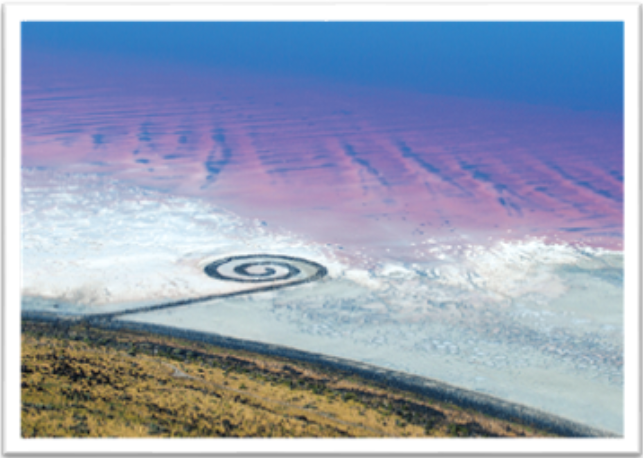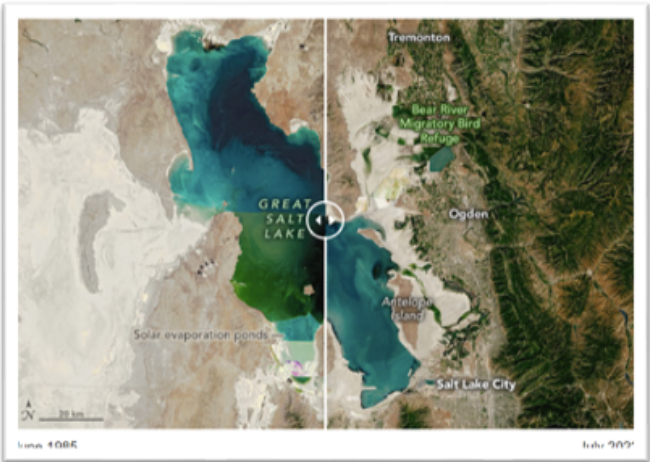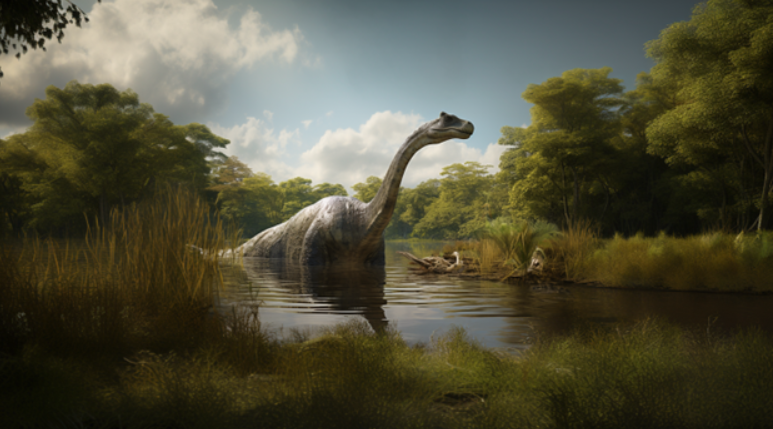The Great Salt Lake is Shrinking Fast. The Race is on to Save it
- Alys Obermaier
- Nov 27, 2022
- 2 min read
Updated: Nov 28, 2022

Lowest Levels
The largest natural lake west of the Mississippi is dwindling to its lowest water levels yet, raising concerns about hazardous dust, ecological collapse, and economic consequences. With a rapid growth in population and the effects of global warming, the lake inches ever closer to perishing entirely. This will result in a blanket of polluted air being cast over Salt Lake City.
Fears Begin to Rise
Located in the United States, Utah, the Great Salt Lake is facing a major drought. Through the use of satellite imagery, NASA claims that it will not be long until the drainage causes the lake to perish. The lake's shrinkage not only poses various risks to the regions around it, but also endangers millions of migrating birds, as well as a lake-based economy that sustains them. As the Great Salt Lake continues to drain, the dry lakebed has the potential to release toxic dust into the air that countless civilians breathe. Salts and sediments can become visible if the lakebed is exposed, capable of triggering respiratory disorders if inhaled.

Through the use of NASA satellite imagery, we are able to capture how the effective the shrinkage has been, since June in the year of 1985, up until July this year.
If the Lake goes, We do Too
Due to the need to supply houses and businesses, the nation's fastest-growing state is also one of the driest, with some of the highest domestic water demand. Not only do these homes and businesses require moisture, but agriculture consumes around 65 percent of the water in the Great Salt Lake watershed. Farmers have a right to that water, and if they don't use it, they risk losing it under historic regulations.
Allies Race to Save the Lake
As a diverse community comes together to seek answers, one message remains clear; the cost of overlooking this natural marvel will be much too great. Although this year is estimated to be wetter than our last, specialists have come to the conclusion that action remains a major priority. First and foremost, drinking water supplies must be replenished. After that, there's the lake. One plan suggests that the residents of Utah are to be more thoroughly informed of the issue, but most importantly, prepared for the actions that follow. To spark positive change within the community, citizens can begin by minimising their personal use of outdoor water. Another plan would suggest that local farmers share their water with downstream farms, while a third would use revenues from mineral exploitation to improve the lake.
“I long took for granted the lake. It’s always been there, and I’ve assumed it always would be there,” said speaker Brad Wilson at a summit he convened on the issue. However, this summer, learning about the lake’s perilous situation left him stunned. “The Great Salt Lake is in trouble. We have to do something, and do it now.”
For more information, go to https://www.weforum.org/agenda/2022/08/great-salt-lake-shrinking-climate-change/or CNN10.com






Commentaires